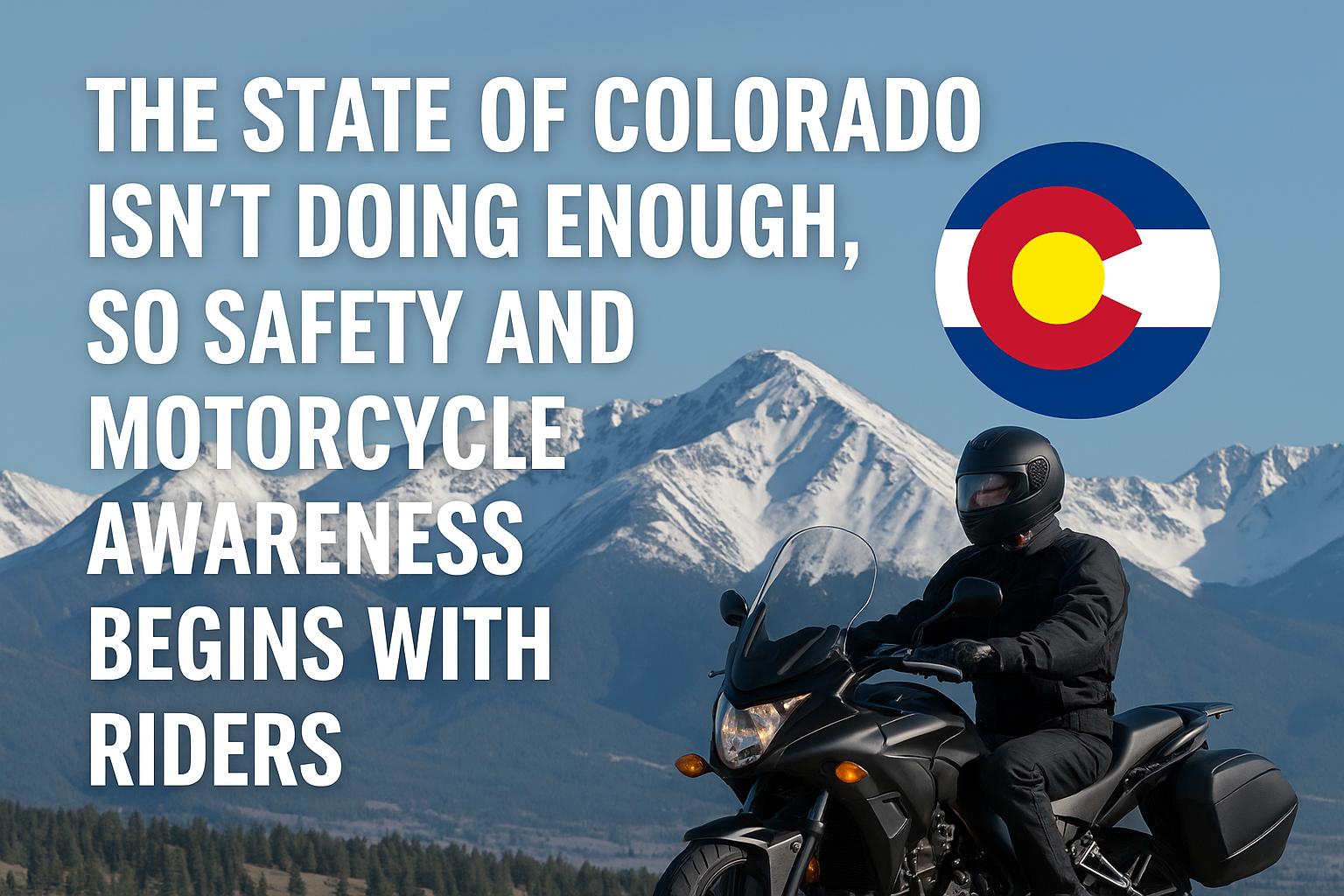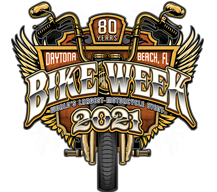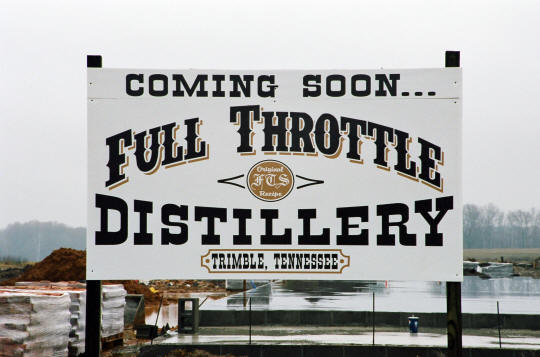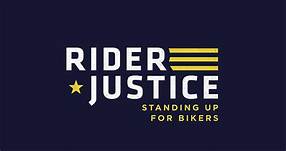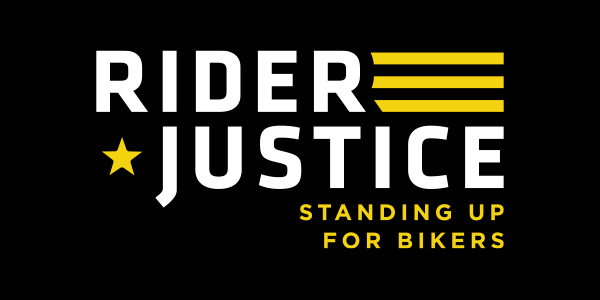By Laurie Montoya, President, BikerDown Foundation
Colorado is in the midst of a motorcycle safety crisis. In 2024, 165 motorcyclists lost their lives on our roads — the highest number ever recorded by the Colorado Department of Transportation (CDOT). El Paso County alone saw 26 fatalities, making it the deadliest county in the state for riders.
Behind these numbers are families devastated, communities grieving, and a riding culture that feels increasingly under siege.
Who’s Really at Fault?
A persistent myth is that riders are mostly to blame for their crashes. In fact, decades of safety research repeatedly show that other drivers cause the majority of multi-vehicle motorcycle collisions by failing to see or yield to bikes.
- The Hurt Report found that ~75% of motorcycle accidents involve another vehicle, while only about 25% are single-vehicle events. In single-vehicle crashes, rider error is often a contributing factor, but in multi-vehicle crashes, fault is frequently attributed to the other driver.
- In Colorado, crash reports emphasize that many fatal collisions stem from drivers making left turns across a motorcycle’s path, unsafe lane changes, or failing to detect motorcycles in their lanes. In 2024, 122 of the 165 deaths involved a collision with another vehicle.
- According to local attorney data, head-on and rear-end collisions account for nearly three-quarters of motorcycle crash types in Colorado.
Thus, while rider error is part of the risk picture, a significant share of fatalities result from drivers colliding with motorcycles.
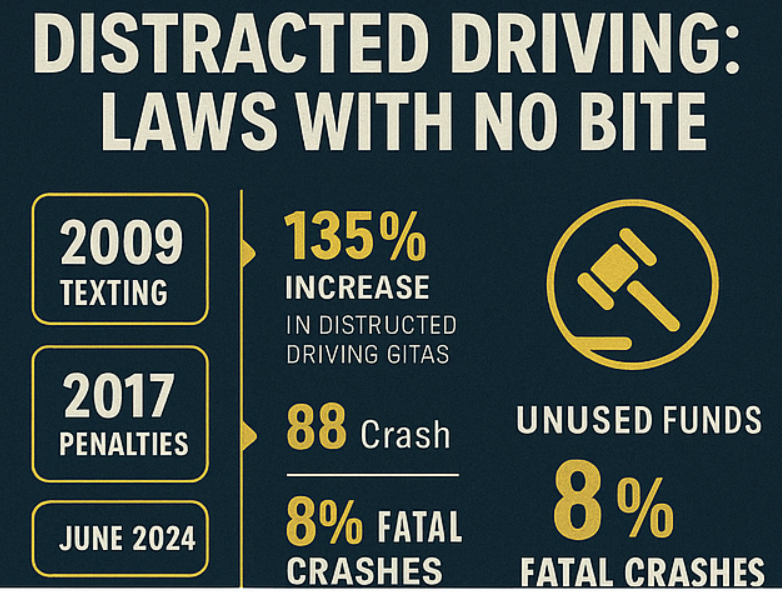 Distracted Driving and No Cell Phone While Driving: LAWS WITH NO BITE
Distracted Driving and No Cell Phone While Driving: LAWS WITH NO BITE
Colorado first banned texting while driving in 2009 (HB 09-1094). In 2017, lawmakers increased penalties (SB 17-027). Most recently, in June 2024, the legislature passed SB 24-065, a full hands-free law that took effect January 1, 2025.
Since then, enforcement has shown progress: CDOT reported a 135% increase in distracted-driving citations early in 2025. In the first few weeks of the year, 94 hands-free citations were issued — more than half of what was recorded during the same time in 2024. In addition, CSP issued 15,553 distracted-related citations in 2023 and over 16,000 in 2021, showing the persistent scale of the problem.
CDOT estimates the new law has already prevented 88 crashes and 49 injuries in just a few months. Still, distracted driving is tied to 8% of fatal crashes nationwide — a number almost certainly underreported. For Colorado riders, that likely translates into a dozen or more preventable deaths each year.
To the best of this publication’s research, CDOT and state agencies do not routinely include insurance checks or driving record checks in their checkpoints. Unless a driver is stopped for another violation, uninsured motorists, driving on suspended licenses, or failing to meet other legal driving requirements essentially go unchecked. That leaves riders and drivers alike at continued risk from people who should not be on the road.
The MOST Program: Riders Pay, Riders Wait
At the same time, millions of dollars in safety revenue are going unused. The Motorcycle Operator Safety Training (MOST) program, funded through surcharges on motorcycle registrations and endorsements, generates approximately $1.1 million annually. Yet expenditures average only $759,000, resulting in a substantial surplus.
Those dollars come directly from riders. By law, MOST can provide up to $200,000 in tuition subsidies for safety courses — enough to train 800–1,000 additional riders annually. That money could also expand access in rural areas, fund endorsement incentives, or support safety campaigns. Instead, much of it remains unused while fatalities rise.
 Driver Accountability Matters Too
Driver Accountability Matters Too
For years, riders have heard the same refrain: take more training, wear more gear, be more cautious. While those messages are valid, there is far less focus on driver accountability.
We need refresher courses for drivers to combat distracted driving and enhance their awareness of motorcycles. We need checkpoints to catch uninsured, impaired, or suspended drivers who pose a daily risk to everyone. Colorado has one of the nation’s higher rates of uninsured motorists — nearly 1 in 6 have no coverage.
When these drivers collide with riders, compensation is often elusive. If distracted driving and insurance violations were enforced more aggressively, not only would crashes decline, but the citation revenue could offset the costs of enforcement operations. Penalizing negligent drivers financially is the kind of deterrent that pushes them to put phones down and become more aware of vulnerable road users.
Helmets: Still a Critical Piece
Even with better enforcement and training, riders must protect themselves. Helmets remain the single most effective piece of safety equipment. In 2024, 44% of motorcyclists killed in Colorado were not wearing helmets — 73 out of 165.
The trend has persisted for years: roughly 70–76 riders each year die without helmets, even though helmets reduce the risk of death by 37% and severe head injury by nearly 69%. In 2025 (through July 23), another 29 riders have died without helmets.
When the State Falls Short, Riders Must Step Up
Since our state programs’ actions — or inactions — have proven ineffective in reducing the number of motorcycle riders injured or killed in crashes caused by distracted drivers, motorcycle awareness must begin with us.
How do we do that? The answer is simple:
- We increase our motorcycle insurance policies to include underinsured and uninsured motorist coverage. When a driver crashes into us without enough or any insurance, we can protect ourselves financially and make ourselves whole through our own policy.
- We received a helmet today, and if we already have one, we invest in upgraded protective gear with pucks and padding to reduce the risk of injury and road rash.
- We acknowledge that WE RIDERS MUST DO whatever WE CAN DO to stay safe out there.
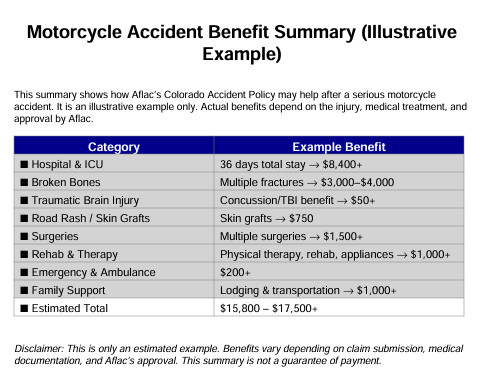 And last, but certainly not least, consider the BikerDown Foundation’s $37.50 per month membership. This plan offers protection in the event of any type of accident, but most importantly includes the Aflac Accident policy that pays cash benefits to help you stay afloat during recovery.
And last, but certainly not least, consider the BikerDown Foundation’s $37.50 per month membership. This plan offers protection in the event of any type of accident, but most importantly includes the Aflac Accident policy that pays cash benefits to help you stay afloat during recovery.
A Call to Action
Colorado riders are shouldering risk and paying into safety programs — but the system isn’t delivering. We need:
- Transparency in how MOST funds are allocated and spent.
- Robust enforcement of distracted driving and uninsured driver laws.
- Expanded training access and endorsement incentives, especially in underserved regions.
- Driver accountability via refresher courses and checkpoints.
- Rider responsibility — helmets, insurance coverage, protective gear, and BikerDown membership.
Motorcycle safety is too important to leave to chance. Until rider-funded dollars are reinvested in rider safety, distracted and uninsured drivers held accountable, and laws enforced consistently, we will continue to lose lives. But riders can — and must — take immediate steps themselves. Together, we can change the equation.
Resources
BikerDown Foundation can help you in the event of a motorcycle accident with recovery, fundraising, financial strategy, medical equipment and other resources to help your family navigate and assist you. Please contact them at 888-BIKERDOWN, or email them at office@bikerdown.org. You can also do a Help Request at www.bikerdown.org
Rider Justice – For over 25 years, Scott O’Sullivan has been helping injured motorcycle riders. He also champions your rights at the Colorado State Capital working on getting the above referenced laws passed to protect everyone on the road. His firm will also do FREE Insurance Reviews to make sure that you are truly covered. He doesn’t sell insurance, but he sues insurance companies. He will give you an honest assessment of what your current coverage has, and what it doesn’t cover. You might be surprised how for a few financial adjustments, you can ride or drive with confidence so that in the event of an accident you are covered. Be sure to give Scott a call at 877-562-9425

